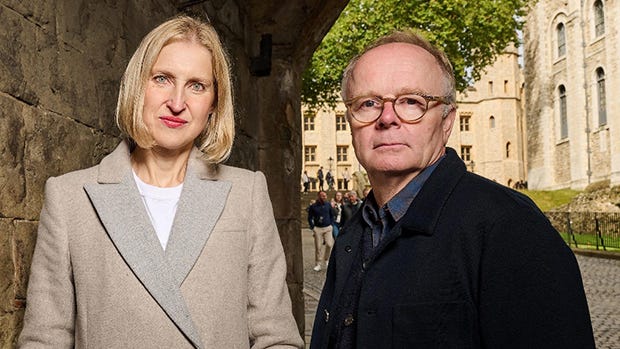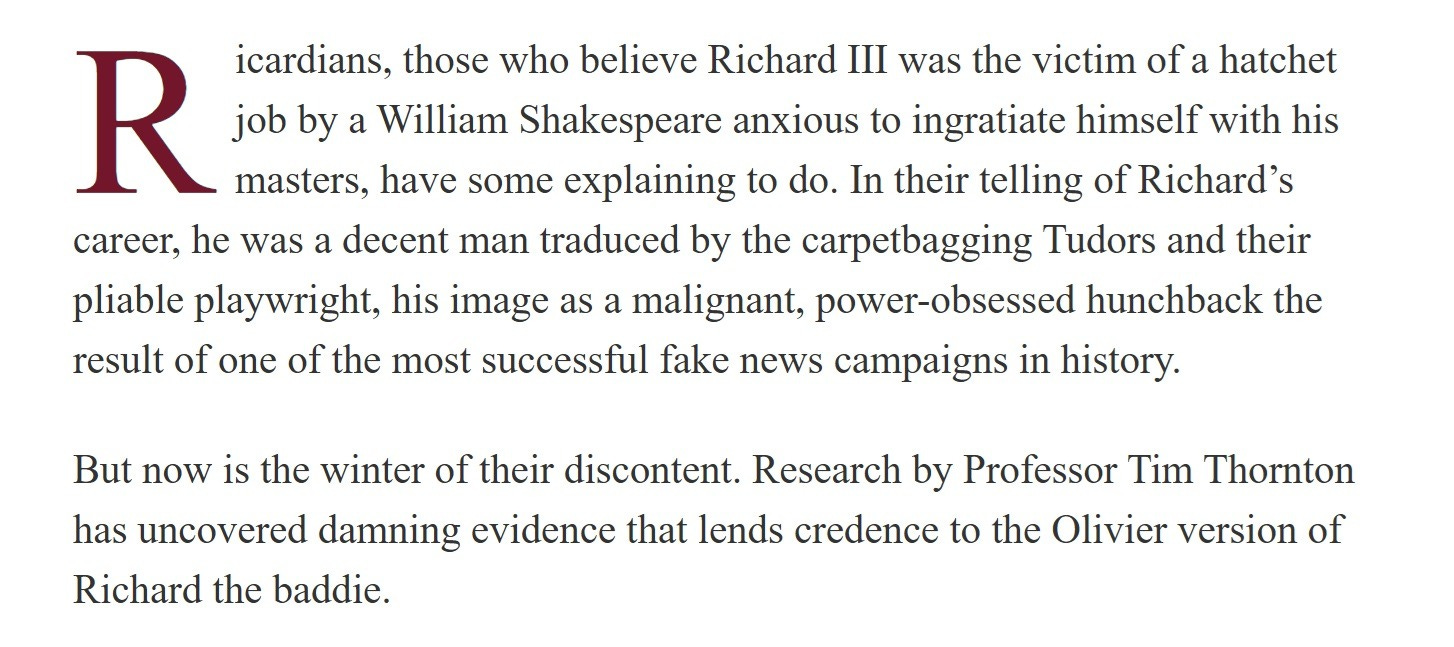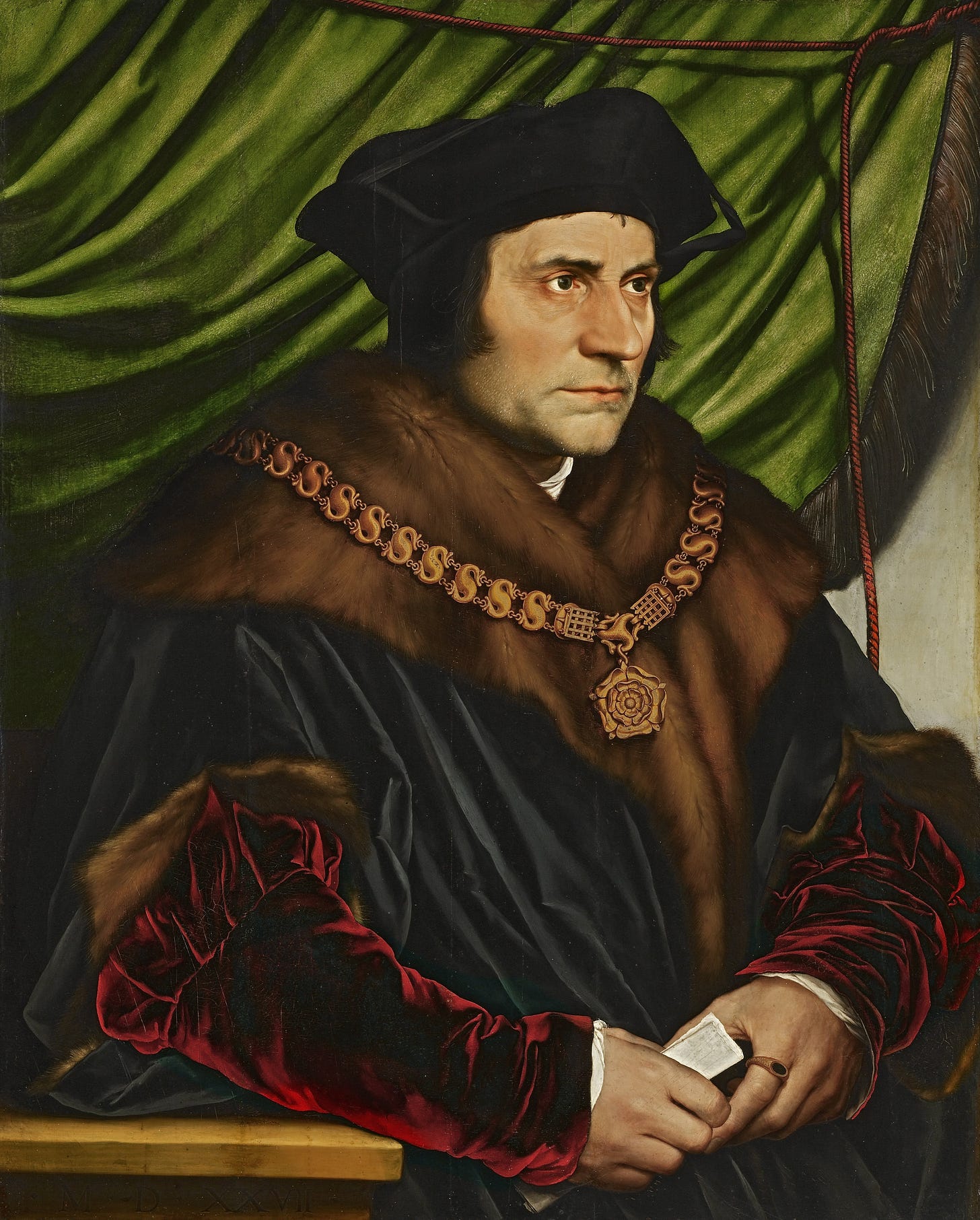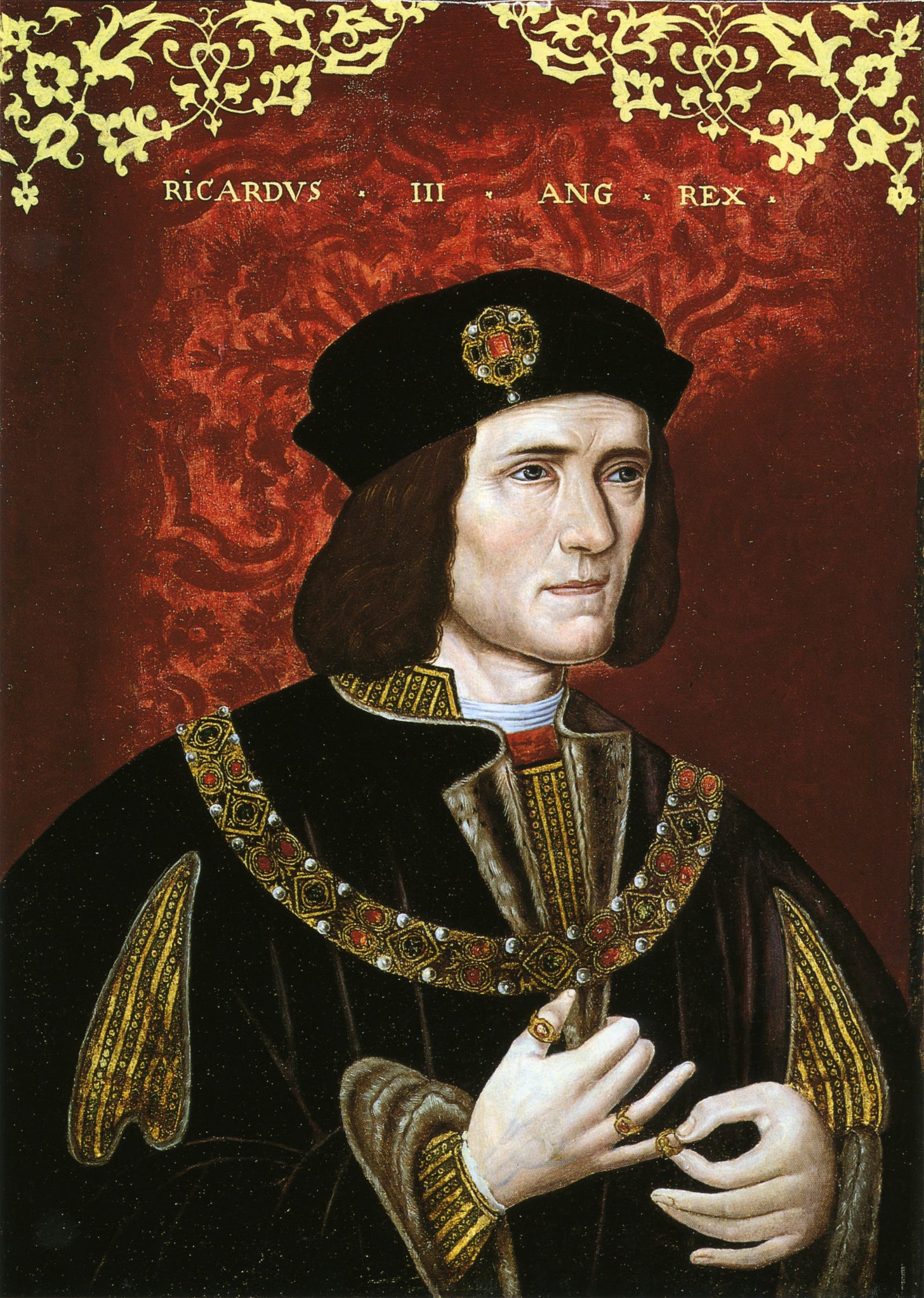Channel 5 has been trailing its new spin-off episode from Inside the Tower of London. The snippets, and the title, The Princes in the Tower: A Damning Discovery, made me wonder what had been found by Professor Tim Thornton this time that was causing Tracy Borman to insist on Facebook ‘Believe me, you’re not going to want to miss this’. Is this the end of my research into the survival of the Princes in the Tower? Will my books be off to the pulpers (where I’m sure some think they belong anyway!)?

This morning, I found out what the evidence is (I’ll link to the article at the end). I’m pretty sure I’m safe. For all the fanfare, this is nothing more than another desperate bid to keep the traditional story afloat. Those clinging to the mast of the sinking ship of that tale seek to cry ‘Land ho!’ before the swelling tide swallows whole the nonsense of treating Thomas More as the primary source for the fate of Edward IV’s sons.
Before I continue, the claims are based on more stunning archival research by Professor Tim Thornton. He is finding unique documents that have never before been examined, at least not in this context. Like his previous discovery around the Princes, it’s valuable and hugely admirable research. But, like his other revelation, it proves nothing. It certainly does not do the job it is being asked to perform. I look forward to seeing how many of those who sneered at the results of the research of The Missing Princes Project seek to hold this flimsy, wet cardboard tube up as the new sword of their conviction in Richard III’s guilt.
Also, before I continue, I did some filming for this documentary about Edward V’s upbringing at Ludlow Castle. I have no idea whether any of it made it past the cutting room. I was strictly forbidden from mentioning what might have happened to Edward and his brother after he left Ludlow. Now I know why. I can’t pretend I’m not frustrated to have been involved but not told that the documentary would present new evidence. Feels like bad form, Lion TV.
So, what is this evidence?
Professor Thornton has uncovered the will of Lady Margaret Capell, dating from 1516, and put into effect on her death in 1522. In it, Lady Margaret leaves an item of her late husband’s to their son. The piece of jewellery is described as his ‘faders Cheyne which was yonge king Edwarde the Vth’ (father’s chain which was young king Edward V’s). This seems to be the first uncovered reference to property that had belonged to either of the sons of Edward IV, so I can understand the excitement.
The will is purported to add weight to Sir Thomas More’s gruesome account of the murder of the Princes in the Tower. Lady Margaret Capell’s maiden name was Arundell. Her older half-sister, Anne Arundell, had been married to Sir James Tyrell, the man Thomas More collars as the murderer of the two boys (or at least, the man who has it done by Forest and Dighton).
So, there it is. Sir James Tyrell must have stolen a valuable collar from Edward V or been given it as blood money for his part in the murder. He must then have passed/sold/exchanged it so that it came into the possession of his wife’s brother-in-law. When he died, it went to Margaret, and when she died, it passed to their son, complete with damning detail of the origins of the blood-soaked trophy.
There’s clearly no effort to hide its origins, which might raise questions about how the family came by it if it was the result of a nefarious and notorious murder. It would have been an odd gift to give – nothing says familial love like a blood-drenched necklace taken from a child you murdered. It is an odd thing to admit when you might just have quietly passed on a nice, valuable piece of jewellery to the next generation. Still, I suppose Henry VIII wasn’t a vindictive, vicious man. Oh, wait…
The first major issue I have is that there is no evidence this piece of jewellery (which has not, itself, been discovered) ever belonged to Edward V. There is less evidence of this than that the pre-contract story of 1483 might have been true or that the 1487 uprising against Henry VII was in favour of Edward V, or that Perkin Warbeck could well have been the real Richard, Duke of York. I hope those who pour scorn on those ideas will treat this revelation with similar scepticism, but I suspect they won’t because, to some extent, it confirms a settled prejudice.
Even if we accept that the collar may have belonged to Edward V, I still can’t see that it does what is being claimed, certainly nowhere near as compellingly. The assertion is that the connection between Tyrell and Lady Margaret means that it was the ill-gotten gains of a murder distributed to his family. That is predicated on believing Tyrell was the murderer rather than offering any proof he was involved.
Lady Margaret’s husband, to whom her will says the chain belonged, was Sir William Capell. He was from an ancient Suffolk family and was a member of the Worshipful Company of Drapers. Sir William was Sheriff of the City of London in 1496, Lord Mayor of London in 1503 and 1510, and MP for the City of London between 1511 and 1515. It’s not unreasonable to believe that Sir William Capell had extensive connections in London, including a trade network as a draper, across Suffolk, and beyond. Any of these might have presented him the opportunity to buy a piece of jewellery to which a royal history was ascribed.
One such known connection Professor Thornton points to is Sir Thomas More. Like the previous discovery, Professor Thornton asserts that this shows where More was getting his information and that we ought to believe what he says about the Princes in the Tower. I’m starting to wonder why More is at the centre of so many webs around the fate of the Princes. It’s beginning to sound suspicious…
Channel 5’s press release tells us that the significance of the find is increased because it’s ‘a prized possession of Edward V’ and because of ‘The symbolism a royal chain of office holds’. Almost every word of that is an assumption without proof, which pretty much sums up the traditional approach to this mystery. How do we know it was a prized possession and not something Edward V had dispensed of to reward some servant before 1483? How do we know it ever belonged to Edward V? It was a royal chain of office? Where does the will tell us that? It doesn’t. It’s an assumption, and I’d suggest a desperate reach.
The press release goes on to state that ‘it potentially offers the most complete picture we have of who most likely ordered the murder of the Princes in the Tower’. The word ‘potentially’ is doing a lot of heavy lifting there. Without convincing evidence that the chain had been the young king’s, or that he didn’t give it away himself, or any account of how it came into the possession of Sir William Capell, it does not paint a complete picture at all.
Like Professor Thornton’s previous assertion that More knowing someone called Miles Forest proved his version of the murders was true, it’s so far beyond a leap you’d need a passport to land on the other side. The reference to More knowing someone named Forest, and this note of a piece of jewellery that is claimed (but not proven) to have belonged to Edward V only serve to condemn Richard III if you already believe he is guilty. It creates a feedback loop.
Even still accepting that the chain might have once genuinely belonged to Edward V, there are any number of ways it might have come into the possession of a Lord Mayor of London, from trade connections to political ones. Even if it came from Tyrell, it isn’t impossible that he was given it for some reason that doesn’t equate to murdering children. Edward V might have gifted it to Tyrell for his part in caring for the Princes, a role suggested by a document The Missing Princes Project revealed last year.
James Tyrell had been a close associate of Richard III’s for more than a decade by 1483. He was not, as More writes, someone Richard had never heard of recommended to him by a page boy as he sat on the toilet. Because More is not writing non-fiction history, as his times and his works amply demonstrate. If Richard was using trusted men to deal with his nephews, Tyrell makes sense, but that does not automatically equal murder.
I find it amusing (by which I mean vaguely infuriating) that Ricardians are often caricatured as close-minded anti-historians desperately trying to prove Richard III innocent of all crimes. It strikes me that the traditional story frequently requires a closed mind and the ruthless, urgent pursuit of any scrap that can be magnified to prove More was correct. Ricardians are generally (not universally, I know) those with a more open mind about what may or may not have happened.
This new evidence is interesting, as all new evidence is.
It’s only compelling if you already unquestioningly believe More’s version of events.
It falls woefully short under any kind of scrutiny.
Interesting, yes. Compelling? Not really. Proof? Definitely not.
Articles in The Times: Princes in the Tower: ‘smoking gun’ evidence bolsters murder theory
The Times view on: Richard III caught in the Act
Press Release referred to: New evidence in C5 Princes in Tower doc - Televisual
Channel 4’s The Missing Princes: The New Evidence on YouTube:








To ‘solve’ the disappearance of the princes there has to be one crucial item. Evidence. This latest ‘revelation’ provides none so Matt is correct, it’s interesting nothing more. I’m surprised at Tracy Borman quite frankly. And Matt? You were treated quite disrespectfully by Lion, poor show on their part 😕
I’ve always found it somewhat suspicious that Thomas More, as a youth, trained with Bishop John Morton.